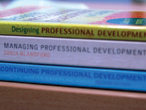Why Singapore’s English Teachers Should Embrace Singlish, Not Fight It
Is it time for Singaporean educators to embrace Singlish as a legitimate learning tool? What the Research […]
Read More
Making one change in our lives is easy, sustaining it is not. Do innovation programmes, often seen as catalysts for change, really lead to positive changes in teaching and learning? What are the real effects on teachers and students? SingTeach speaks to Lim Tze Mien, who explores these issues in her doctoral research project which looks into issues involved in sustaining educational change.
To innovate is to introduce new ideas or new ways of doing things for the better. When we talk about innovation programmes in school, we are talking about changes in the way teachers learn and engage students.
“The problem is a practical one,” says Tze Mien, who has more than 12 years of teaching experience. “I’ve been on the ground for many years and one of the things I see happening after Thinking Schools, Learning Nation and Teach Less, Learn More is the quick impetus for change.”
“There’ve been many attempts at change at the curricula, pedagogical and administrative level and,” Tze Mien continues, “it feels like everything is in constant flux.”
 Not that change is an unwelcome thing, but often, most schools do not been engage in deep conversations with all levels of stakeholders about the learning innovations they want to implement. Few schools have a well thought-through blueprint for innovation. As a result, learning innovations are seldom implemented with sustainability in mind. Many often fade away, negating efforts and resources that were put in in the first place.
Not that change is an unwelcome thing, but often, most schools do not been engage in deep conversations with all levels of stakeholders about the learning innovations they want to implement. Few schools have a well thought-through blueprint for innovation. As a result, learning innovations are seldom implemented with sustainability in mind. Many often fade away, negating efforts and resources that were put in in the first place.
>In an effort to answer the call for innovative changes, teachers and schools are in a frenzy to “sample” as many of such programmes as possible. Tze Mien’s challenge to them is to stop broadening and start consolidating their positions.
She says, “If schools continue to sample at the buffet table of possibilities without taking stock of how ideas fit into a blueprint for sustained change, little will be translated into real practice. Teachers will tend to hold on to traditional practice in the face of constant flux, and we will not be able to cultivate and nurture the kind of students that the global futures demand as quickly as we want to.”
She adds, “We might possibly find ourselves in a lag situation instead, trying to undo problems like programme overload and burnt-out teachers.”
What then can teachers and schools do to sustain change and fully reap the benefits of these innovation programmes?
Based on her research, Tze Mien is proposing a ninth element – diversity.
Diversity underlines how much we value cultural diversity in our midst. It starts with understanding our specific cultural contexts. It’s not just about importing systems but designing approaches that maximize the cultural strengths of our context.
For real change to take place, schools have to take stock of the real needs of their institutions: the readiness of the teachers, the areas of strengths and lack in their staff and organization, what is worth adopting and what needs to change structurally and process-wise to support change.
Tze Mien believes it is an urgent matter for schools to take stock of all the pedagogical exposure that teachers have had thus far, and engage in deep conversations at all levels to draw up a viable plan for incubating and extending critical innovations school-wide. Rather than see rapid cycles of sampling, trials and abandonment of ideas, with the attention shifted to the next sexy innovation, change should culminate towards meaningful and significant improvement.
Reference
Fullan, M. (2005). Leadership and sustainability: System thinkers in action. Thousand Oaks, CA: Corwin Press.